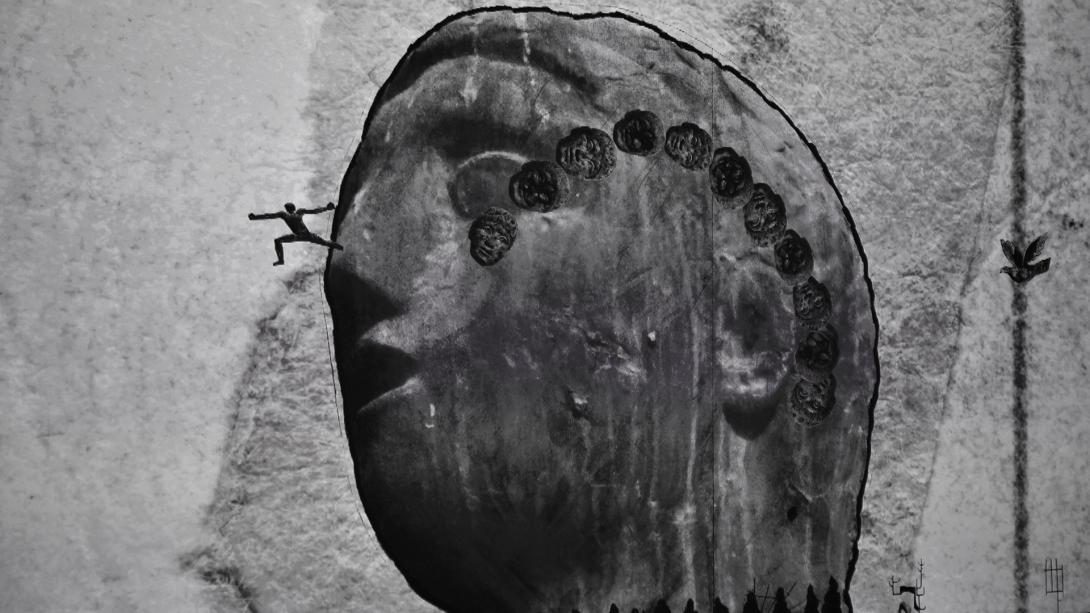Sadik Kwaish Alfraji
APT9
Born 1960 Baghdad, Iraq
Lives and works in Amersfoort, the Netherlands
Sadik Kwaish Alfraji works with drawing, painting and video animation to explore ideas of memory and nostalgia based on personal experience. His work has a strong graphic quality, with a reoccurring solitary figure represented through black silhouettes. As a young artist in Baghdad, he trained in printmaking and painting, and was influenced by the German Expressionists and by European and Iraqi philosophy and literature. Memories of his homeland are recalled with deep longing and connection, particularly the wealth of visual imagery he was surrounded by as a child — wall and floor carpets, prayer mats, fine porcelain, family pictures, images of religious and political figures, Koranic verses and decorative scenes from nature. He recalls the mourning festival of Ashura as symbolic of his ongoing practice. The atmosphere of the festival is reference through the inky black figures he draws, shown either ‘curled or bent in on themselves, or soaring towards the heavens and unknowable dangers’ with their air of ‘wonder, sadness and mystery’.
Sadik Kwaish Alfraji has also worked with the QAGOMA Children's Art Centre to develop a project for APT9 Kids.

Sadik Kwaish Alfraji / Iraq b.1960 / Once Upon A Time... Hadiqat Al Umma (still) 2017 / 9-channel HD video, 16:9, 8:10 minutes, colour, sound Installation view / Commissioned by Barjeel Foundation / © Sadik Kwaish Alfraji / Image courtesy: The artist and Ayyam Gallery, Dubai
As a child, Sadik Kwaish Alfraji would visit the small public gardens of Hadiqat Al Umma (the ‘Nation’s Park’) in Baghdad with his father, and marvel at the plants, fountains and public artworks. In response to the death of his father and the artist’s return to Iraq after 20 years abroad, Alfraji began the multi-part project ‘Once Upon a Time’ in 2010. Taking the gardens as its inspiration, Once Upon a Time… Hadiqat Al Umma 2017 revives his childhood experiences in this immersive animation made from over 14 000 charcoal drawings, displayed across nine projections. As viewers – unable to take in all the onscreen details at once – we catch fragments and fleeting moments mimicking the sensation of walking through the park.
This video installation draws on iconography from several artworks in Hadiqat Al Umma by leading Iraqi modernist artists. These artists and their work represented the struggle for justice and liberty – at a time when newly independent Iraq was creating its own secular national identity, free of British occupation or Ottoman rule. The park has fallen into disrepair since the First Gulf War (1990–91); however, for Alfraji, it continues to represent a place where he can imagine all sorts of magical undertakings.
